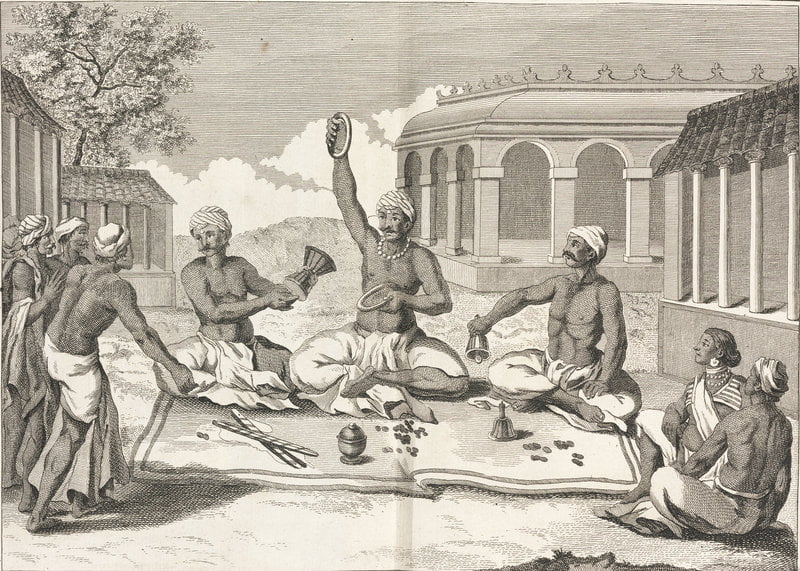
Yoga used to be a men’s only club. But did it inspire an exercise that’s helpful for women trying to combat “mummy tummy”?
Science & Society Picture Library/Getty Images
“There is nothing new in the world except the history you do not know.”
-Harry S. Truman
Earlier this week, NPR published a story about how women can fix their “mommy pooch” — you know, that soft belly many moms retain after having a baby.
The story garnered hundreds of comments and emails. Many readers wanted to learn more about the new exercise. And one sharp reader pointed out that the exercise might not be as new as we think.
“Reminds me of Kapalabhati breathing exercises in yoga,” Hemakshi Adke, of Portland, Oregon, wrote in an email. “When I do them regularly, it does help.”
Here at Goats and Soda we are intrigued: Did yogis hold the key to mommy pooch centuries ago?

SHOTS – HEALTH NEWS
Flattening The ‘Mummy Tummy’ With 1 Exercise, 10 Minutes A Day
Let’s start off with a little yoga history.
Kapalabhathi is a technique described in the classic 15th-century yoga text Hatha Yoga Pradīpikā, says James Birch, a historian of the Haṭhayoga project at SOAS London University. The term comes from two words in Sanskrit: kapala, which means skull, and bhati, which means light.
Back then, Kapalabhathi had one major purpose: To clear out congestion from the sinuses, lungs and throat, Birch says.
“It will reduce or alleviate excessive kapha dosha,” Birch says, “which is probably phlegm.”
Reducing phlegm isn’t likely to help with postpartum abdominal issues. But when you look closely at the two exercises, they do have some surprising similarities.
Let’s do a side-by-side comparison.
In the mommy pooch exercise — which is sometimes called a drawing-in exercise — you take a deep breath and then suck your belly back into the spine on the exhale. Then you hold this position. From there, you take small breaths, and on the exhale, you push the belly back further into the spine. Then you just do this over and over again, rhythmically.
In Kapalabhati, Birch says, the ancient text says the technique is done like the bellows of blacksmith, with very rapid inhalation and exhalation.
Nowadays, there are several ways to do the yoga breathing exercise. But in general, you typically inhale through your nose and then on the exhale, also through your nose, push your belly back into your spine.
“It’s quite rapid and gentle,” Birch says. “The inhalation is just natural, and then the emphasis is on the exhalation. But there’s no real tensing of the abdominal muscles, at least not to the extent that you describe for the other exercise.”
So would Kapalabhati be helpful for new moms?
It depends how much your body has recovered after giving birth, says Catherine Allen,who has been training yoga teachers for 18 years.
“Kapalbahti pushes downward and puts pressure on the pelvic floor muscles,” Allen says. These muscles are under a lot of stress during pregnancy and delivery. So they can be weakened and damaged immediately after giving birth.
You want to make sure your pelvic floor is strengthened and recovered before doing Kapalbhati, Allen says. “Otherwise, it could make things worse.”
So I guess ancient yogis didn’t know the secret to postpartum health after all — which is actually not too surprising given that the ancient yoga texts were written by men for men.
“They do not ever mention that women were excluded from yoga,” Birch says. “But back then, a woman would definitely need her husband’s or father’s support to practice yoga.”
[“Source-npr”]
